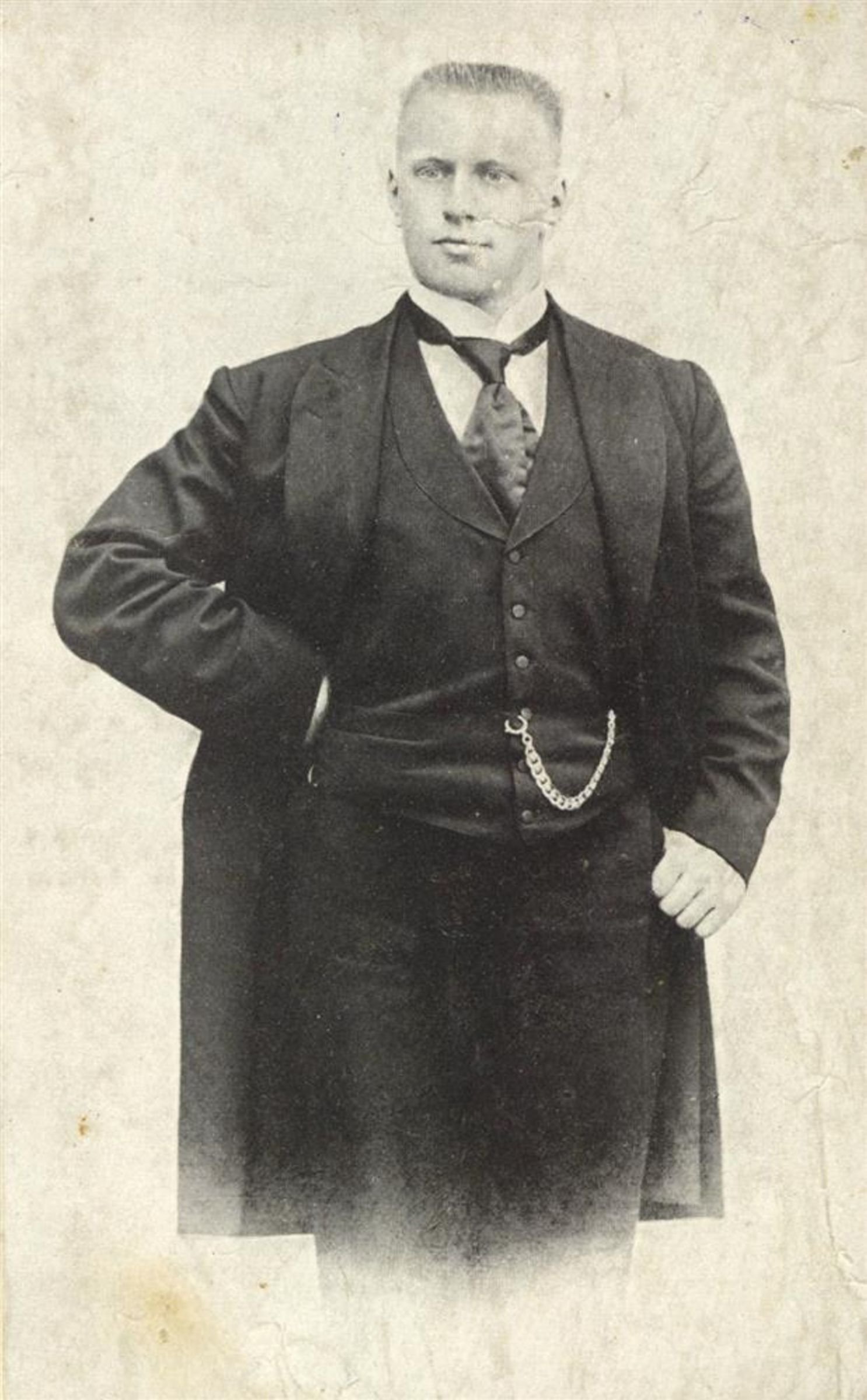Conservation of large-scale printed works on paper on the example of posters in lithographic technique depicting Georg Lurich
Autor: Ülle Soosaar
Number: Anno 2022/2024
Rubriik: Conservation
The purpose of the conservation work was to prepare two posters depicting the Estonian professional wrestler Georg Lurich [ill 1],[ill 2] preserved in the Museum of Viljandi for digitization and to ensure their preservation for longer time.
Description of the practical work is supplemented by a chapter on historical background, in which Lurich is characterised as a versatile personality [ill 3], and his partner and friend Viljandi bookseller and publisher Hans Leoke [ill 4] is introduced, because on the Lurich’s full portrait can be found his library stamp. [ill 5] In addition, a brief overview of the lithography technique [ill 6] and on the printed materials of that technique produced by Adolph Friedländer's lithography printing house [ill 7], including posters depicting Lurich, is given. The part of the printing history is based on Stephan Oettermann's catalog „Adolph-Friedländer-Lithos: ein Verzeichnis nach Nummern“ on the history of the Adolph Friedländer lithographic printing house.
The condition of the museum exhibits before conservation was so poor [ill 23], [ill 25] that it was not possible to digitize them in this form. Numerous damage and losses of paper were found [ill 8], [ill 10], which (especially in the case of a full portrait) severely distorted the image [ill 9]. Thorough conservation gave the posters the quality they needed to make copies for use. [ill 24], [ill 26]
Conservation processes began with Lurich's breast portrait – conservator Maris Allik dry-cleaned and dismantled the poster with the necessary previous processes, and the author of this work was able to observe these processes. The author's participation in practical work began with washing the poster on a vacuum table [ill 16], as it is a process that is efficient to perform by several persons, particularly in case of large objects. The description of the conservation processes is based on work done with a full portrait of Lurich. [ill 14], [ill 15], [ill 17], [ill 18] As the conservation plan was generally similar for both posters, the individual differences that emerged during the work are highlighted separately in the description. For these large and severely damaged posters, the best solution for conservation was supporting them with a full japanese paper backing.
Material studies were also carried out, which included examination of the condition and origin of paper fibers, determination of lignin content and additives. Studies confirmed that paper of the poster has been severely degraded over time by various factors, in some places held only by printing ink. The posters were printed on low quality paper, which could be produced using both recycled rag paper and wood pulp. [ill 12] It was practically impossible to identify specific wood species because the wood fibers were extremely decomposed and lost their original shape during repeated processing. [ill 13] Analytical studies concluded that chlorine, aluminum and silicon-containing substances (chlorine compounds, alum, kaolin) were used in the manufacture of the paper.
As expected, the biggest challenge in this conservation work was that the posters were large objects in terms of the usual parameters of the works on paper. The preparation of work surfaces (table, vacuum table) as well as precise planning of work processes (washing on a vacuum table, backing, digitization) required non-traditional solutions. Some of them required the cooperation of several conservators. The posters had to be dryed on a drying board after conservation because there was no paper press of a suitable size. The larger poster, consisting of two sheets, was divided in two during conservation and was processed in separate parts. It was recommended to digitize full portrait while still attached on a drying board to achieve a high-quality result. [ill 19], [ill 20] Making a large archival permanent box for storing the posters required combining and manual work. [ill 21] It is also difficult to find a place for such a large storage box in the museum's storage rooms. [ill 22]
The article was translated by the author


























